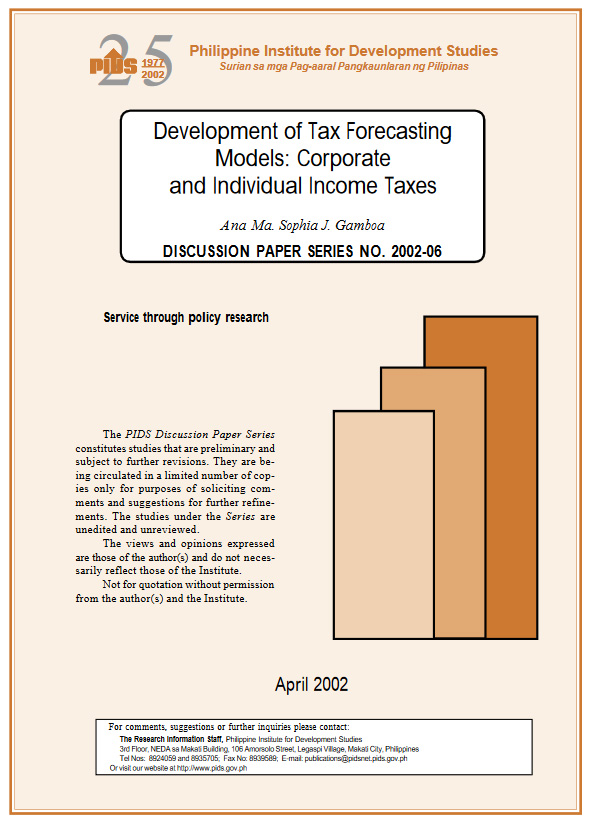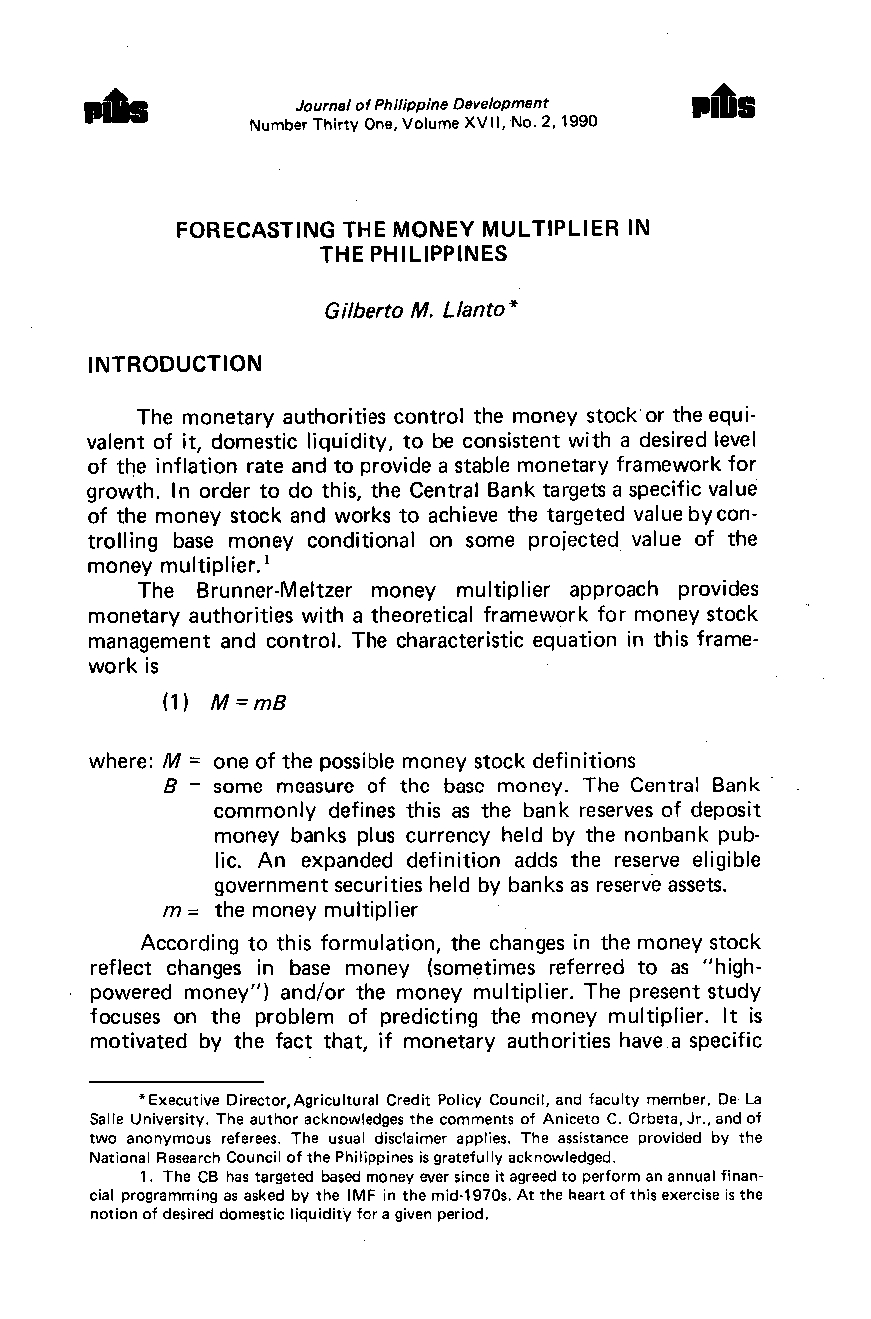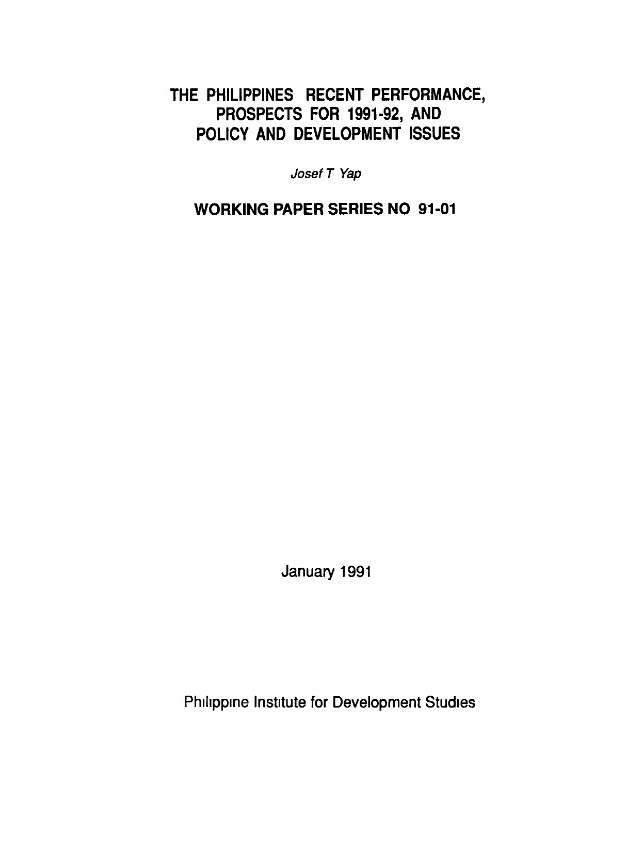Assessment of the fiscal sector performance in the last decade has often laid the blame on poor revenue performance to below-target tax collection performance of government tax collection agencies, frequently attributed to graft and corruption among its officials and employees. The attribution, generally, is warranted. But other public economists have been looking into the possibility that the revenue targets in the last decade may not have been realistic in the first place, which may account for some of the recorded shortfalls in revenue collections. The importance of realistic revenue forecasts cannot be downplayed. At the macro level, realistic revenue targets are important inputs to effective and efficient public expenditure management. At the micro level, realistic revenue forecasts become effective standards of measurement against which the actual performance of collecting agencies are assessed. Further, realistic revenue forecasts imply good and realistic revenue forecasting methodologies. These methodologies may be used not only as a gauge to measure the revenue impact of proposed tax reforms but also as a tool to evaluate the efficiency and equity implications of said tax reforms. The main objective of the study is to develop tax forecasting model(s) for corporate and individual income taxes, which revenue collecting agencies and policymakers may opt to use in coming up with their forecasts of corporate and individual income taxes. A previous study by Manasan concluded that "elasticity approach in tax forecasting resulted in the lowest average RPMSE forecasting error, indicating in turn that the functional relationship between the different tax categories and their respective bases is better described by the power function and the simple linear one". This study has arrived at a similar conclusion. The linear models used in this study, however, yielded very high RPMSEs, unlike in Manasan’s earlier study where the linear equations seem to have better forecasting results. In fact, all forecasting equations that ‘best’ explain income tax movements (both corporate and individual) are power functions, implying that the income taxation system has a regressive tendency.
Citations
This publication has been cited 2 times
- Nazarov, P. A. and Maria Kazakova. 2014. Theoretical basis of prediction of main budget parameters of country. Published Papers r90221. Russian Presidential Academy of National Economy and Public Administration.
- Nazarov, P. A. and Maria Kazakova. 2014. Development of prediction model of basic budget parameters in Russian federation. Published Papers r90220. Russian Presidential Academy of National Economy and Public Administration.













